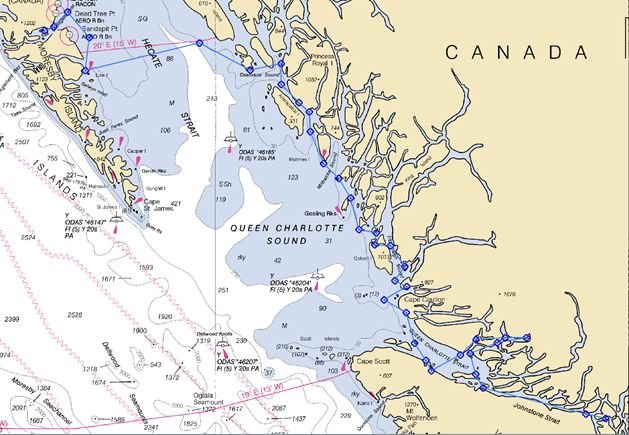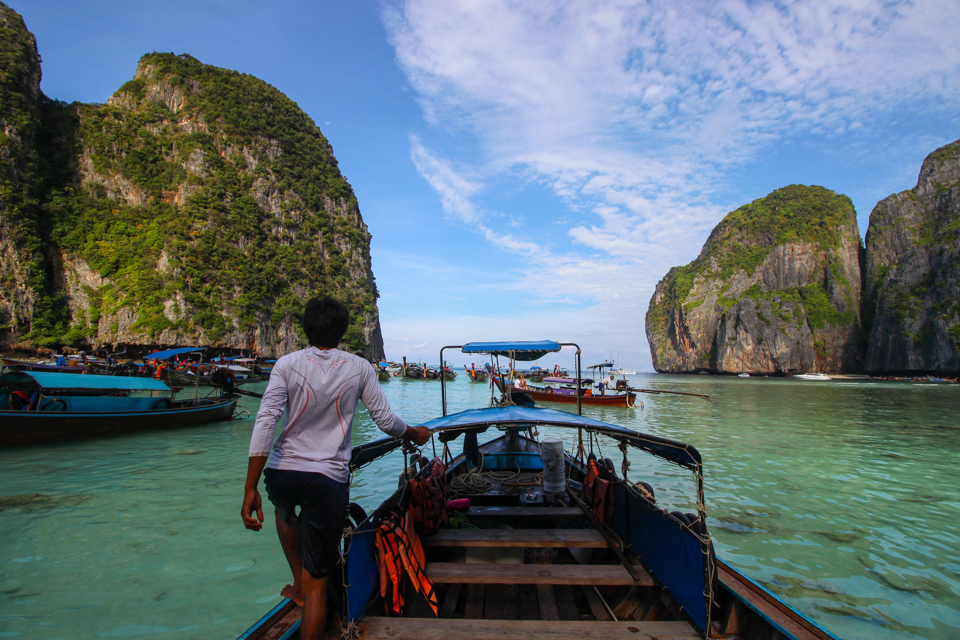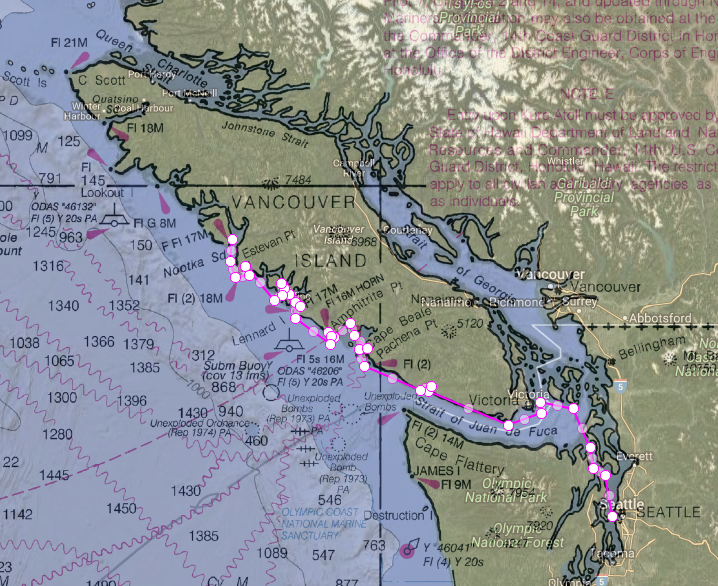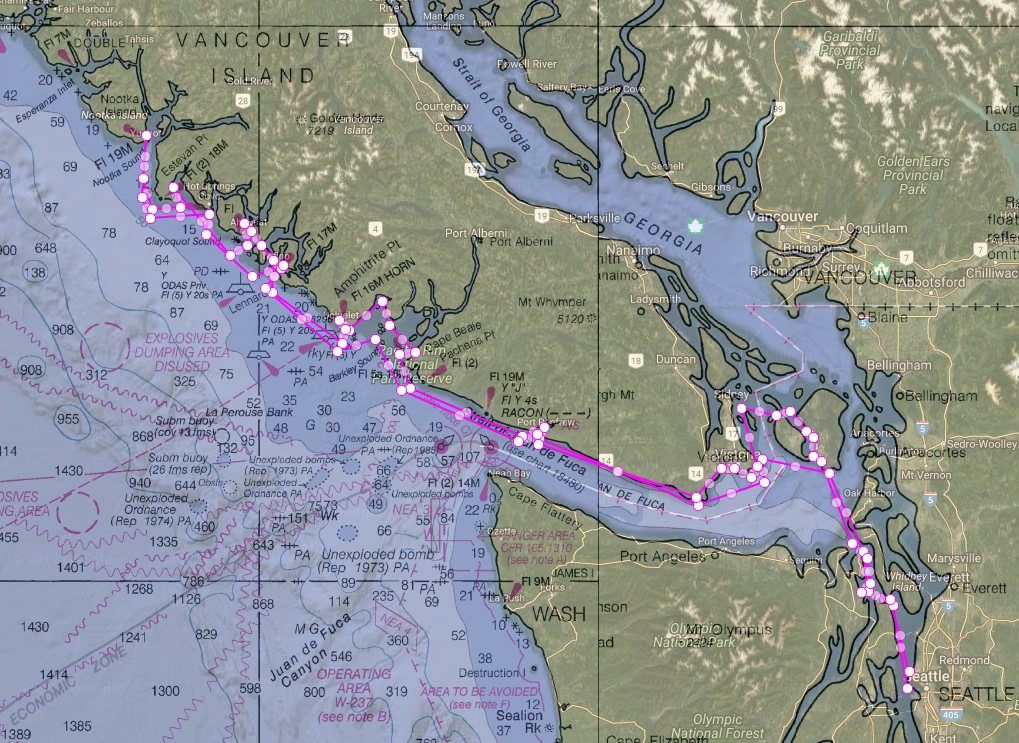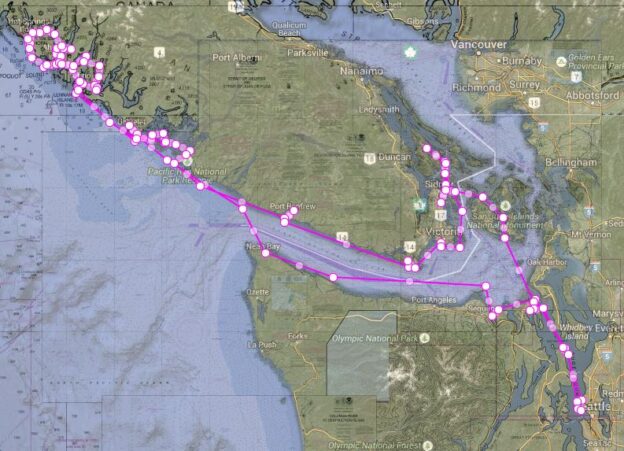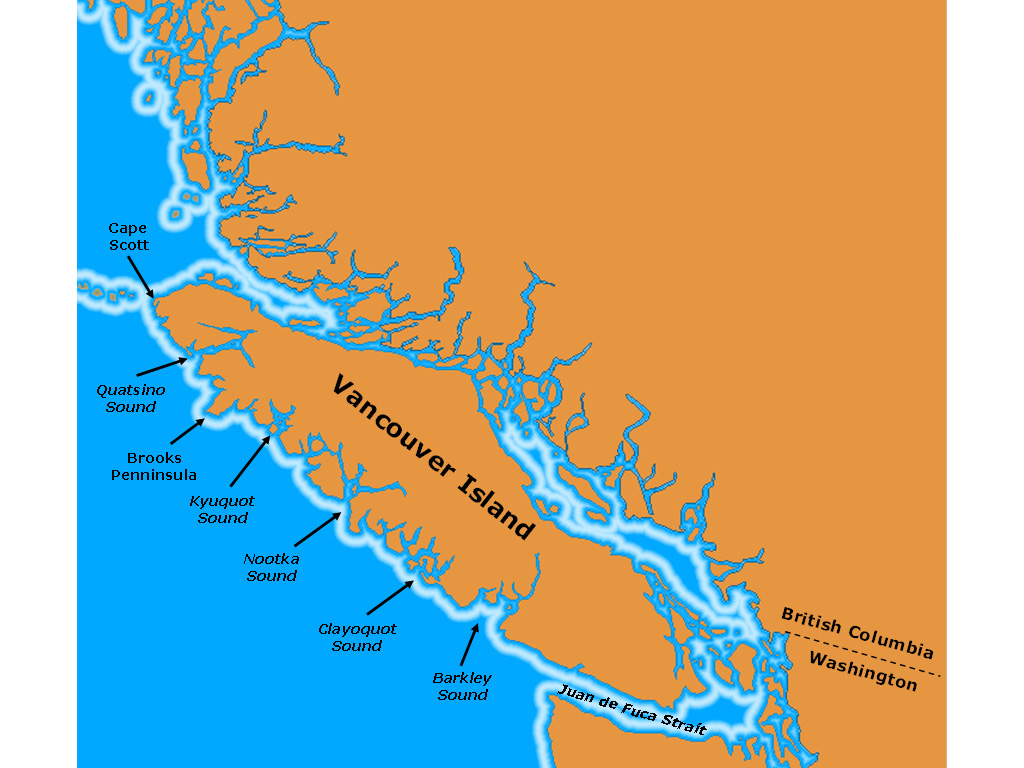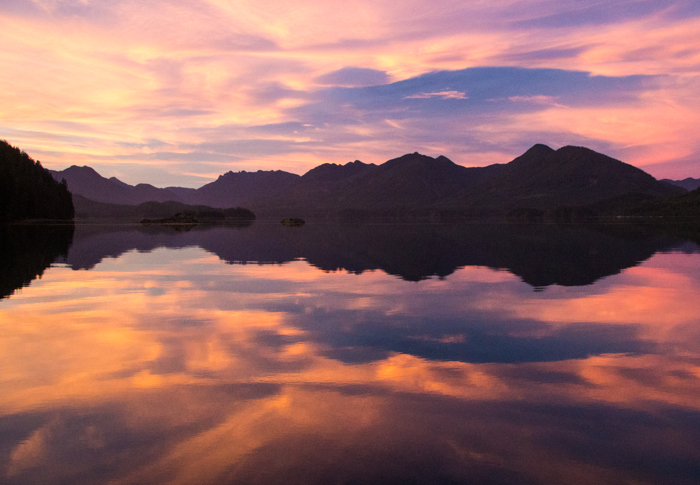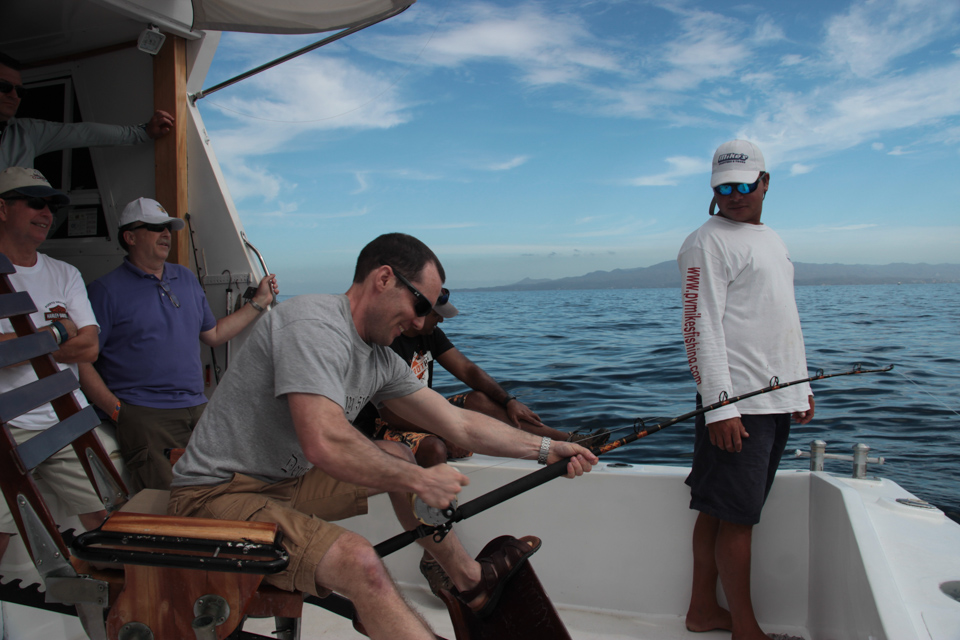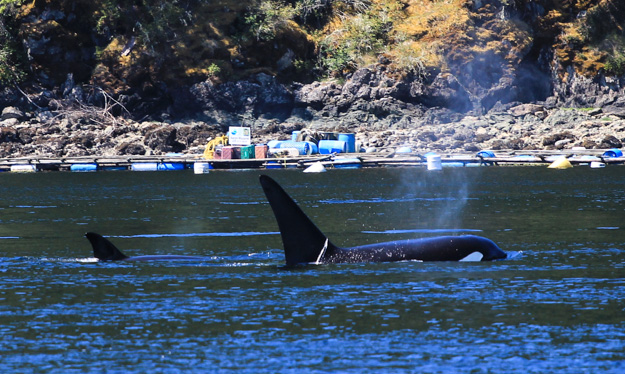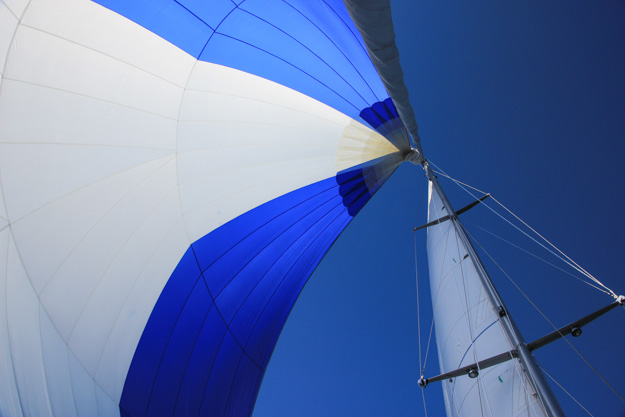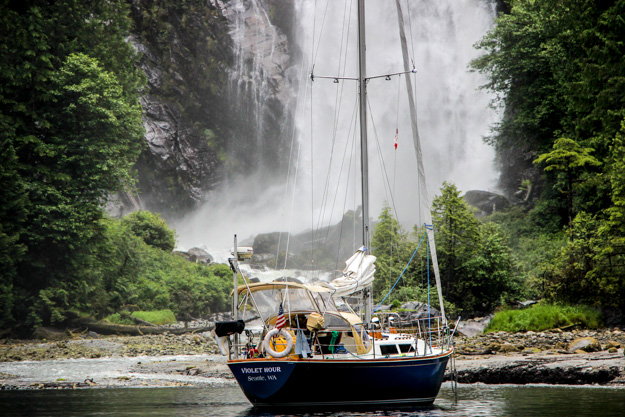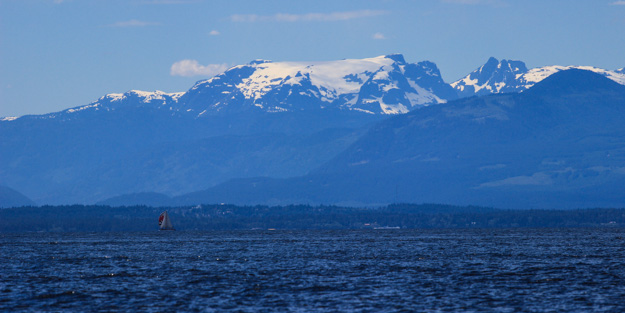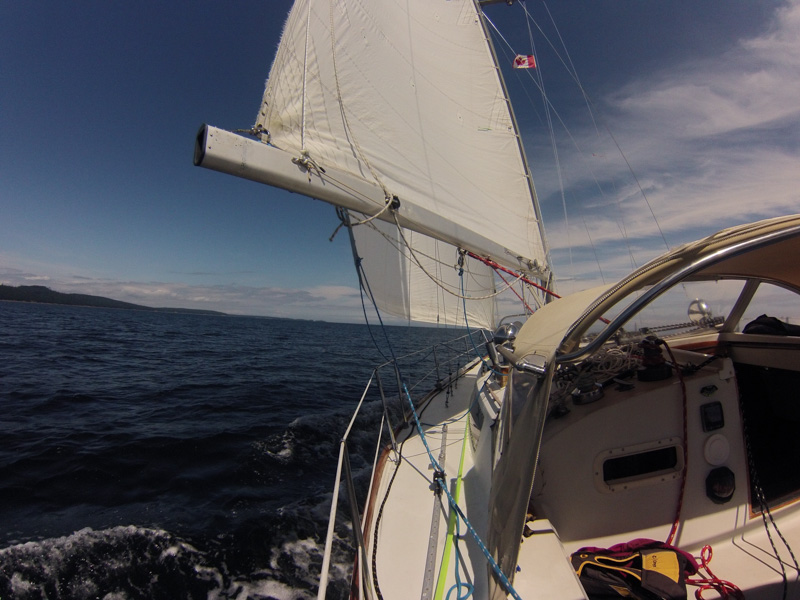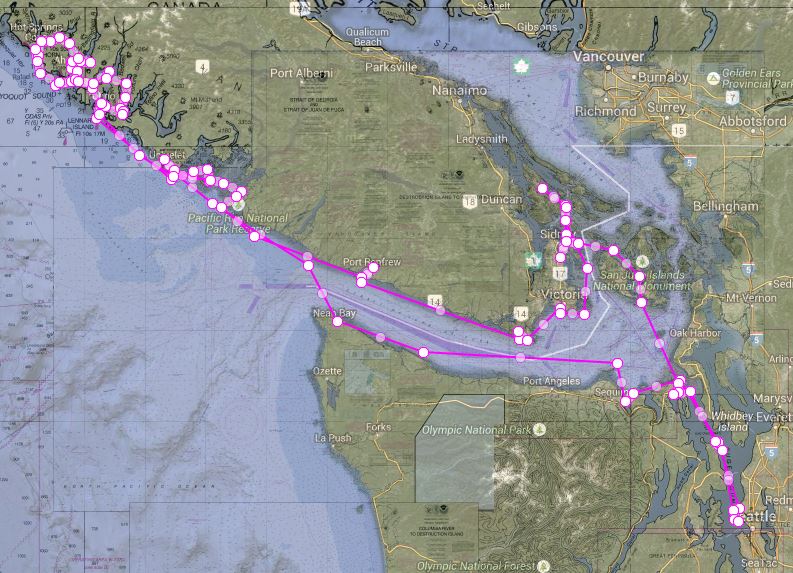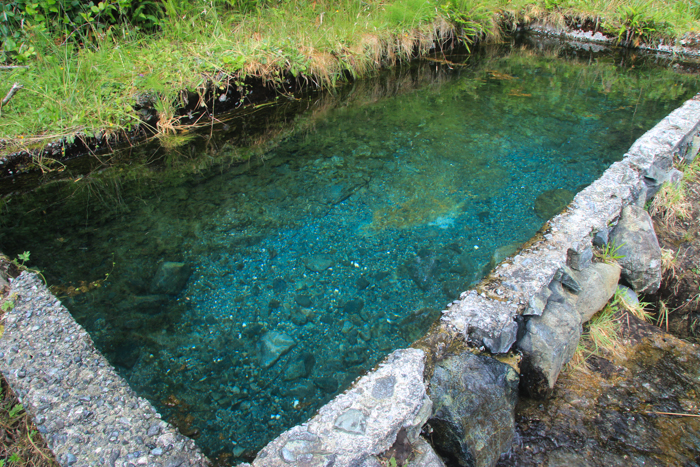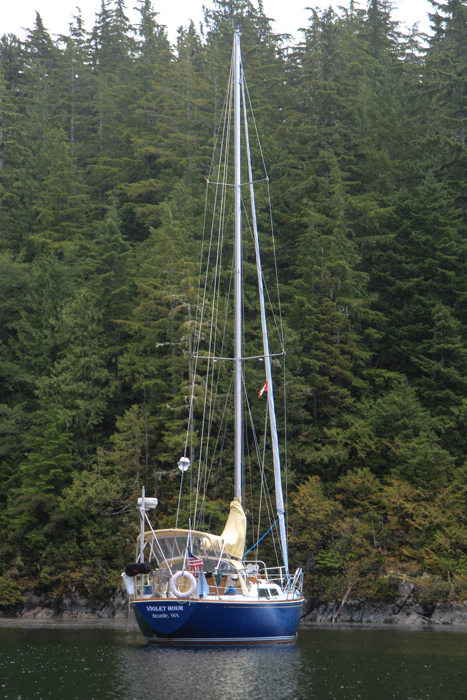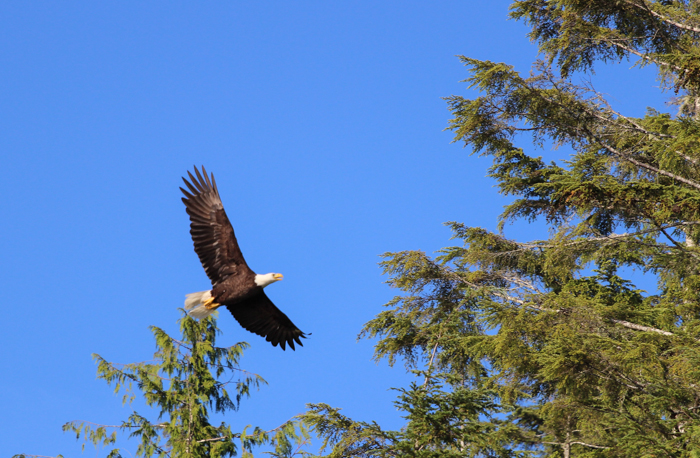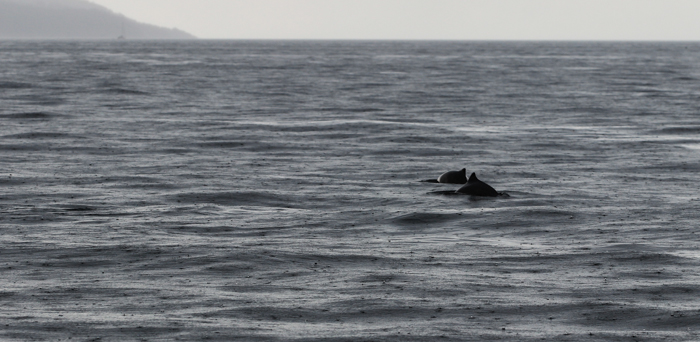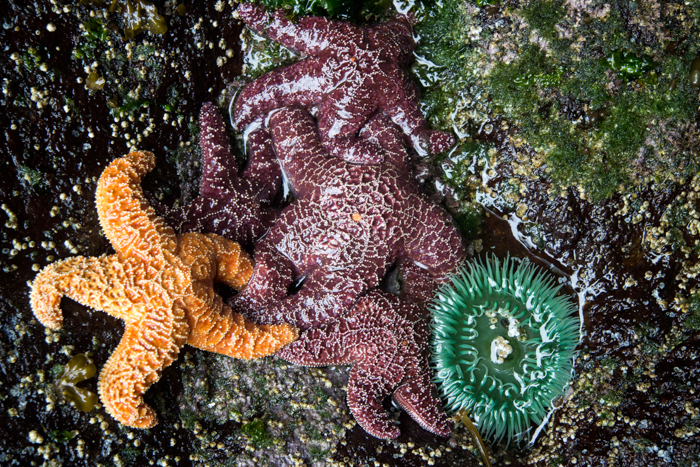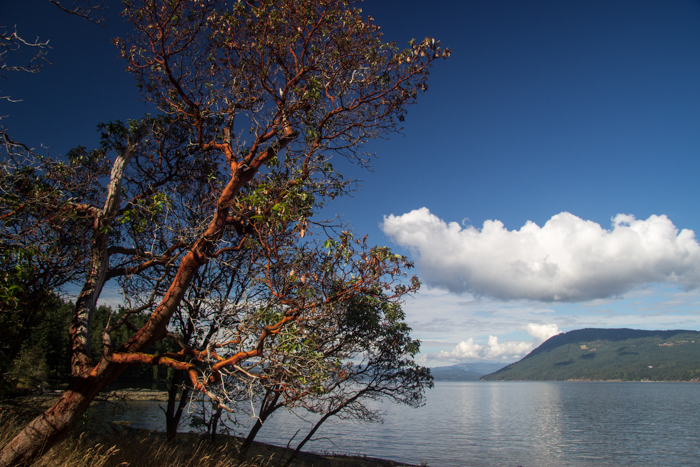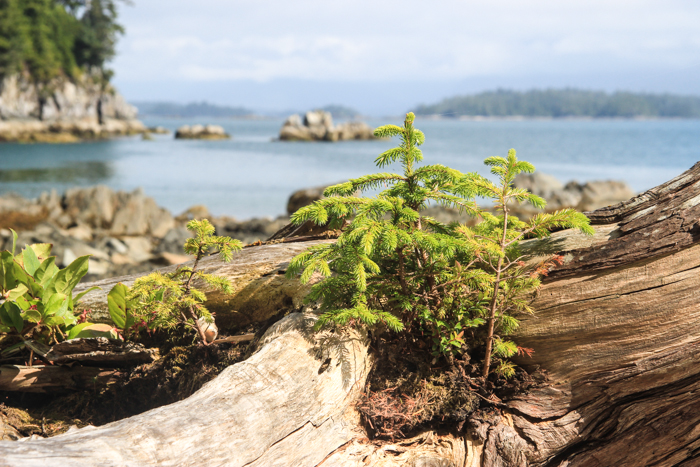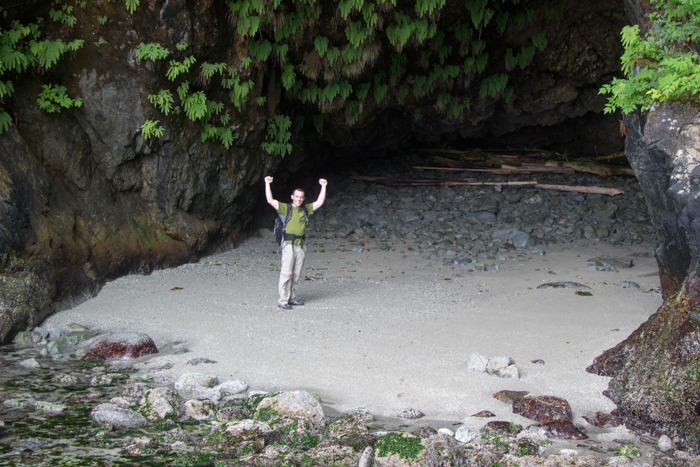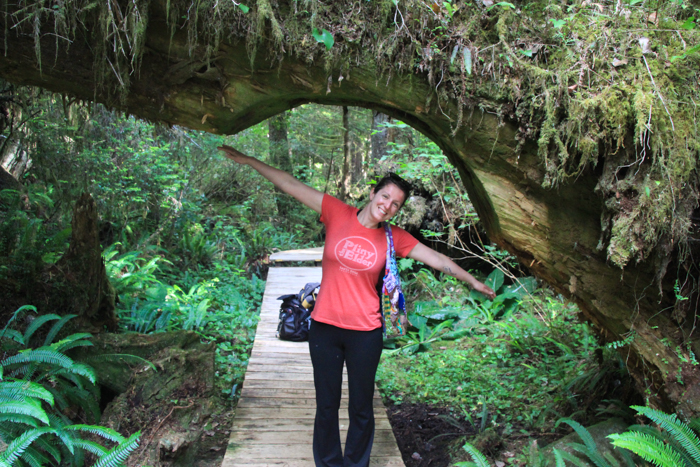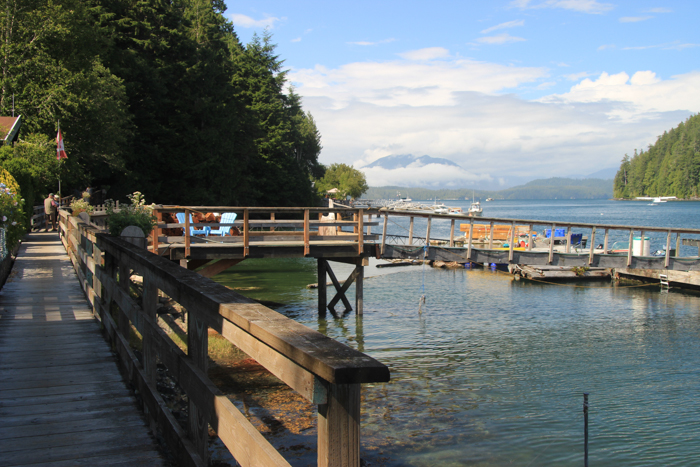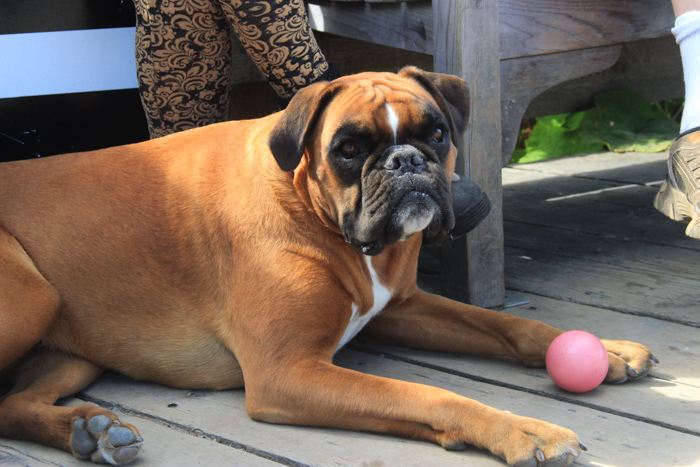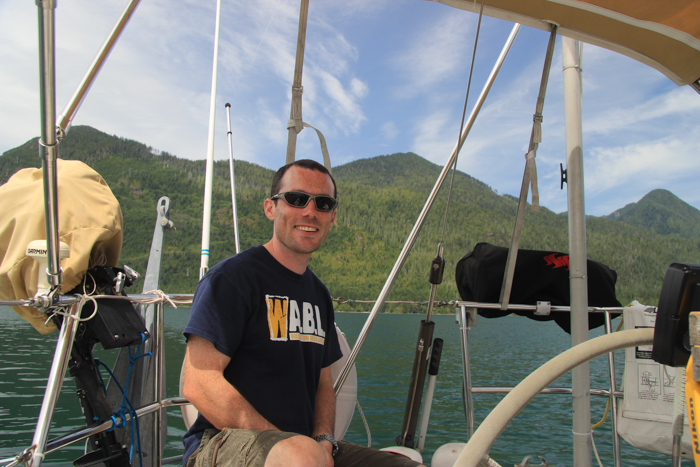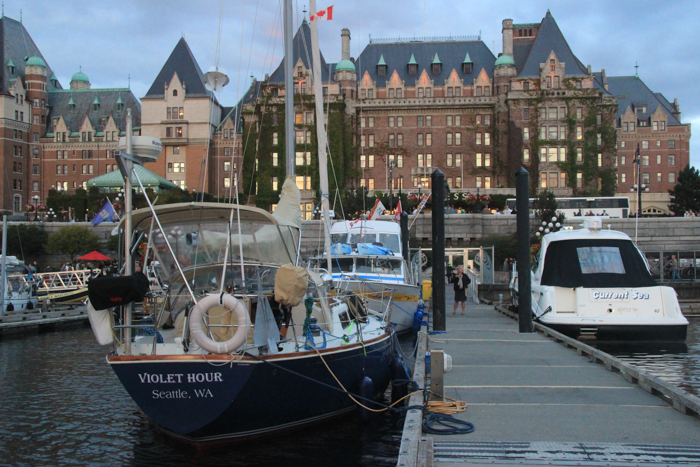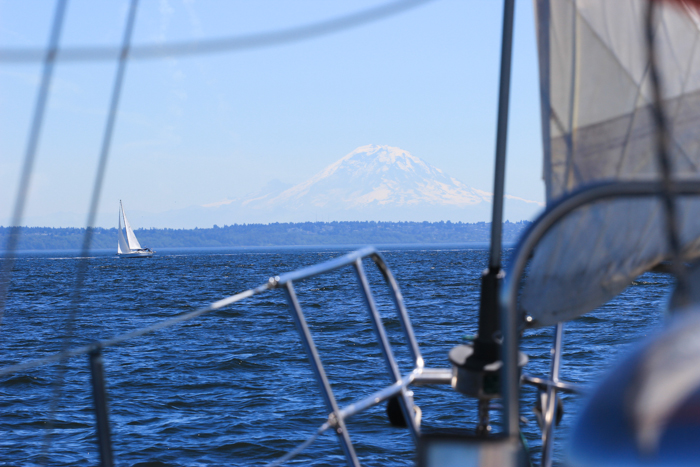As the roar of the breaker came up behind my shoulder I looked back to see green water curling towards our stern. *Boom!* The wave smacked the side of the hull. In the next instant the wave top crashed into the cockpit, sending gallons of cold water over me and immersing my feet ankle deep.
My jacket, pants and sneakers were drenched, and the water slowly drained. No time to worry about that though, as I steered to ride the wave down. This wasn’t the first breaker we’d had that day but it was the one that caught us the worst.
It was June 15 and we were crossing Hecate Strait from the south of Haida Gwaii to the Central Coast of BC. With a forecast of NW 20-30 we thought we’d have a tough but manageable day, but ended up having a steady 30-35 knots and 6 to 14 foot waves at a 6-7 second interval (very short interval, with confused tidal interactions in some places).
Apologies that I don’t have many pictures, but conditions were way too difficult to spend time doing photography. All photos except for one were taken before 10am, in the relatively easier conditions.
Stats
-
- Hours: 18 1/2 hours; June 15 2018, 4:30am – 11pm
Sailed: 17 1/4 hours, Motored: 1 1/4 hours
- Straight-line distance: 90 nautical miles
- Distance covered: 104 nautical miles
Covered under sail: 97 nm, Covered by motor: 7 nm
- Hours: 18 1/2 hours; June 15 2018, 4:30am – 11pm
- Wind range: NW 5-15 (10% of passage), NW 15-25 (5% of passage), NW 30-35 (80% of passage), NW 20-25 (5% of passage)
- Wave state range: 3 ft (near Haida Gwaii), 6 ft, 9 – 12 ft, confused tidal interactions, confused swell + wind wave interactions.
- Waves as measured by South Hecate buoy: 2.3m (7.5 ft) significant wave height at 5:30pm, 6 second period. Maximum zero crossing wave height 4.3m (14 ft).
- Sail configurations: full sails (main + 135% genoa), reefed main + full genoa, double reefed main + full genoa, double reefed main + double reefed genoa, double reefed main + staysail, staysail alone, double reefed genoa alone, full genoa.
- # Sail config changes: 9
- Autopilot usage: ~40%; 8-12 hours of hand steering
- Boats seen: 1 (cargo vessel)
- Seasickness preventatives: Patrick: Sea-bands, 1 Bonine; Natalie: 1 Bonine
- # of times we wished we were someplace else: Too many to count

Route across Hecate Strait (purple line is the rhumbline – straightest course – and yellow is our actual course). We initially stayed close to the rhumbline or headed up above it (because we knew building winds would force us more downwind). The part where we were forced off the rhumbline was mostly 30-35 kts with staysail alone, and the turn where we pointed more northeasterly is where we decided to try to make Milbanke Sound.



